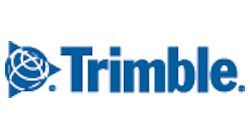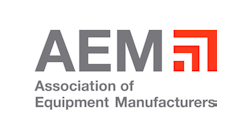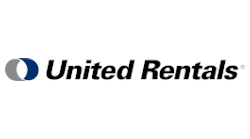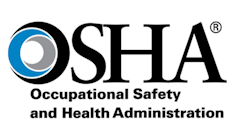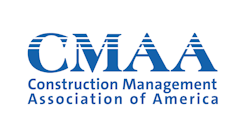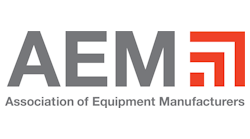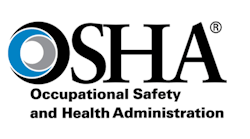Your Experience Modification Rate: What It Is and How It Affects Your Bottom Line
March 1, 2002
“If the numbers are appropriate and everybody plays by the rules, the EMR is a useful tool. But it can be abused, mistakes can be made, and its value can be overstated.” –Art Levine, attorney and former workers’ compensation insurance underwriter————The practice of consulting a company’s safety record to help evaluate its general competence dates back to the 1980s, when safety laws became more rigid and corporations became more committed to enforcing regulations. Lately, however, there has been a growing trend to judge a company’s commitment to safety and its overall management expertise by an indicator originally developed in the insurance industry to calculate policy premiums.Insurance companies refer to this new competence indicator as the experience modification rate (EMR) or modification rate or just plain MOD. Whatever it’s called, the EMR is a relatively straightforward computation that compares a company’s annual losses in insurance claims against its policy premiums over a three-year period, excluding the most current year. Larry Melocik of Melocik & Company (www.melocik.com) in Baltimore, MD, explains: “It’s like your automobile insurance. If you have a clean record, you’ll probably get discounts on your insurance–what they call a ‘Credit MOD.’ But if you have accidents, they add surcharges, and that’s called a ‘Debit MOD’ because they’re adding onto the base rate to determine your premium.” Any company with an annual premium greater than $5,000 is subject to a premium modification rating. Base rates for premiums reflect the average risk likely to be incurred by companies within a given SEC code. Companies whose claims are average for their industry can expect an EMR of 1.0, but those with claims above the industry average will see their EMR jump above 1.0 and their insurance premiums rise accordingly. Conversely, a history of below-average claims will show up in a MOD rate below 1.0–a rate that translates into considerable savings in insurance costs. Although modifiers are computed for all three insurance types–general liability, auto, and workers’ comp–it’s the workers’ comp policy modification rate that is used as a nutshell indicator of a company’s commitment to safety and overall management competence. “You work with the current EMR,” says David Sund, co-owner of Insurance Concepts of San Antonio Inc. Sund has extensive experience in applying modification rates to insurance premiums, “regardless of whether it’s better or worse than the previous three-year periods. You may go back and review the past years just to see what the trends have been. If they go from 1.5 down to 1.0, for example, this means the company is doing something right. It might suggest that in the year prior to the current year, it had no losses or, at the least, minimal losses, or maybe it had one bad year three years ago, but the last two years have been very clean, and that’s what brought the modifier down.” Art Levin, an attorney in Fullerton, CA, represents employers in workers’ comp disputes. He considers the EMR a good indicator of a company’s commitment to safety, but other industry observers worry that the process by which the EMR is computed is open to error. Thus, they believe the resulting rating is actually more of an indicator of past rather than current safety performance and the modifier can be tipped out of balance easily by a one-time catastrophic event. On the other side of the coin, there are benefits to maintaining a -1.0 MOD beyond keeping your insurance premiums in check, and there are strategies companies can use to help keep their MOD rate low.The State of the ArtA recent Web posting from DuPont tells the story. In a newsletter aimed at safety executives, the chemical giant lays out its policy: It will not work with any company that hasn’t “demonstrated its ability to work safely,” as reflected in an EMR of 0.99 or below. Anything above 0.99, and you’re out in the cold when it comes to DuPont. Another Web posting, from a risk management director of a company in Texas, describes the company’s marketing director as being “terrified” that the firm’s current 0.99 EMR will jump beyond the magical 1.0. Likewise, a scaffolding company reports that it’s accustomed to obtaining prequalification based on its EMR, and its efforts to keep its MOD rate under 1.0 have often put it on the defensive when it bids against companies less committed to safety. “I’ve been working here for 10 years,” states Ellin Callahan, marketing manager for John Carlo Company Inc. in Clinton Township, MI, a construction company that has been at the receiving end of the -1.0 EMR restriction and now requires the same standards from the subcontractors it employs. “I’ve had to develop prequalification packages during that entire period,” continues Callahan, “and I would say we’ve been hearing about the insistence of an EMR of less than 1.0 for the last three or four years.” Callahan thinks the trend has trickled down from a handful of companies at the top, such as the big three automotive manufacturers in the Detroit area, to companies such as hers (500 employees, $200 million annually). In regard to the policy possibly limiting the subcontractor base from which the company is able to draw, Callahan insists she has no trouble finding subs and reports that John Carlo Company currently maintains a database of 700 contractors who meet its EMR standards.As with any standard that is applied arbitrarily, linking a company’s commitment to safety to its MOD rate has posed problems. For example, the EMR leaves out the current year in its calculation (to account for claims that remain outstanding), which means that the MOD rate is effectively outdated before it’s applied. Furthermore, Melocik estimates that 15-25% of the rates calculated are incorrect. “At best,” maintains Levine, “the EMR is only a rough measure of job-site safety in that it does not differentiate between fraudulent and valid claims, does not distinguish between true accidents that could not have been avoided and those which were preventable by better safety measures, and may be skewed by a one-time catastrophic event.”To help compensate for the lagging timeline, companies wanting to get a better handle on how a constructor is currently managing safety may also request to see a company’s incident and lost-day rates. Callahan reports that in its prequalification packages, John Carlo Company is typically asked to submit both these indices along with its OSHA 200 log, a copy of its safety program, and proof of its participation in the “Safe to Work” program, a safety training and drug-and-alcohol monitoring program.
Gordon Wall, the company’s corporate health and safety manager, explains how incident and lost-day rates relate to the EMR: “They complement each other. Your EMR indicates how much you are spending versus how much you’re paying in premiums, and if your expenditures are outstripping your payments, this means you are not doing well in the safety arena and your incident rate and your lost-day rate will be high. The incident rate is the rate at which you’re hurting people bad enough that they have to have more than first-aid treatment. A potential client is going to look at your rate and compare it with the average for your industry. The lost-day rate is an indicator of how many lost-day cases you have versus all others–days when a worker is injured enough that he can’t work and has to be replaced. If I take 100 people and I have a lost-day rate of 1.8 and an incident rate of, let’s say, 9, that means I hurt nine people bad enough to go to the clinic and get stitches, and two people bad enough that they lost a day of work or more. When we’re dealing with subcontractors, I want to see all three. A company’s EMR may be great, but if I take a look at its lost-day rate and incident rate, I might find out it’s actually in the middle of a bad year.”Melocik agrees. “Frequency of accidents means that something severe is eventually going to happen, like a driver who keeps getting into at-fault accidents is more likely to kill somebody someday than someone with a clean record. If you really want to check up on a company, you need to know what they’re doing currently, and this is the way to do it,” he stresses. Keeping a Bead on the NumbersWhile Wall suggests that companies have been known to manipulate lost-day and incident rates–by providing a state rate when a rate for their nationwide operation might be called for, for example–the EMR is subject to other types of data management errors. Melocik explains: “The EMR is computed by an independent agency, usually the National Council on Compensation Insurance [NCCI], a private corporation funded primarily by the insurance industry, or sometimes a state agency or a state fund. The key is that whoever computes the modification rate bases its computations on information supplied by a company’s insurance carrier, and there are often errors in what carriers submit. There might be losses applied to a company’s account that aren’t theirs, for example, or the insurance company might fail to indicate when it has recovered funds to cover a loss from another insurance company. Certainly there are going to be everyday data-entry errors. Regardless, all of this information goes toward calculating the EMR, which is why companies must be diligent about reviewing the experience modification worksheets used to calculate their MOD.” Both Melocik and Levin admit that the EMR worksheets can be difficult to understand and suggest that a company hire a certified public accountant who is familiar with the insurance business or a comp-claim management expert. “First you have to find the error,” explains Melocik, “then present it to NCCI or whatever agency computes your modification rate. Then you have to convince them to acknowledge the error and restate the modification calculation. Then you must go back to the insurance company and request that it recalculate your premium.” Levin suggests that the problem is even more complicated. First, he notes, insurance companies do not, as a matter of course, provide their insureds with copies of the EMR worksheets; you have to request the copies. Second, insurance companies have been known to inflate claims. “When there’s an injury and a claim is reported to the insurance company,” says Levin, “the insurer is obliged to estimate what the ultimate cost of that claim will be to NCCI or whatever the rating bureau happens to be. There have been huge arguments and many lawsuits against the California state fund, which has been held for punitive damages because it had the policy of estimating every claim to the maximum possible potential. The problem is that once a number is reported to the rating bureau, it can never be reduced except under very unusual circumstances, even if it turns out it the estimate was widely overstated. So you had a situation in which the carriers were estimating, not what the most likely value of the claim might be, but the maximum potential, which then got cranked into a company’s modification rate.”The problem is compounded because most companies don’t monitor their data until it’s too late–usually not until their modifier comes up higher than expected. Levin recommends that a company start monitoring the information it supplies to the insurance company (injuries and payroll information) and begin to check on insurance company records as early as three months into the new policy year. Lana Sund, co-owner of Insurance Concepts of San Antonio, TX, handles the workers’ comp insurance for the agency. She confirms the need to keep abreast of what’s being reported. “It’s very important that the correct payroll information be forwarded to whatever agency is computing the EMR. It’s important that you check that the claims are closed out when they should be. Supposedly you shouldn’t be penalized too much for having one catastrophic claim, but right now we’re arguing about an account that had one catastrophic claim over a 10-year period and one very small claim, and their modifier jumped to 1.51.“We advise our clients to pay small claims under $100 or whatever number they’re comfortable with, but at the same time report all claims so they’re on file. We also advise clients to be careful in their hiring practices, to check the workers’ comp history of prospective employees, to conduct criminal checks, and to insist on physicals to determine if a potential employee has a preexisting problem. We also tell our clients when an employee is injured, they should get to him or her quickly.” Although Wall at John Carlo Company also advised paying small claims, Melocik reports that NCCI has recently adjusted its calculations so employers are not penalized for paying the small claims. “They realized they were losing counts of frequency and didn’t really know how many injuries were actually occurring.” Melocik also agrees with Lund’s advice about being careful of whom you hire, not only to guard against employees who might be likely to injure themselves on the job, but also to weed out what he calls the “comp kings and queens”–those workers likely to abuse the system.Making the System Work As Lund observes, even in a company committed to safety, accidents happen, claims are paid, and your EMR goes up. “We have a client who had gotten his EMR down to 0.74,” relates Lund, “and then had a series of back claims. Now he’s over 1.0.” Although Lund suggests that sometimes such circumstances amount to the luck of the draw, Melocik and Wall think there are always warning signs when a company’s MOD rate is in danger of edging above 1.0. Their advice:Watch out for hiring too fast in a tight labor market where you feel you are being forced to take on people who might not be qualified or might have problems with substance abuse (a predictable indicator of injuries). Be diligent about monitoring supervisory personnel in the field. Be mindful of the fact that while the frequency of injuries is actually down nationwide, the cost per injury is going up because of hikes in medical insurance and wage inflation. More than anything, if an injury happens, either take care of it yourself or monitor how the insurance company handles it. States Levin, “The carrier has the right to manage the claim, but the company can make sure it has the correct information, and you can ask questions–‘Has the deposition been taken?’ et cetera. You can make sure that modified work has been offered.” “Twenty percent of workers’ comp claims account for 80% of what insurance companies pay out,” points out Melocik. “These are the lost-time claims where a person is collecting indemnity for being out of work. What often happens with construction companies is that a worker gets hurt on the job, doesn’t report the injury, goes home, stays home, and the people at work figure he’s just not showing up. Or he tells the foreman and the foreman forgets, and the next thing you know the injured worker gets a lawyer and things start rolling. And once a worker is off work due to a workers’ compensation injury, the only way to stop him from collecting money is get him or her back on the job. “Managing an injury means getting the worker to a medical provider you’ve selected because they know about work injuries. They’ll take your injured worker right away, they’ll give a medical report to the company, and they will inform you about the restrictions of the injury–what the worker can and can’t do so you can get them back to work doing modified or light duty. We find that in 25% of the cases, modified duty is exactly the same or similar to the worker’s ordinary job. Let’s say someone’s job is driving. He or she sprains an ankle. Under normal circumstances that person would be off work until the ankle heals. But careful consideration of the injury and analysis of the job show that they don’t need to use that ankle to drive, so they can, in effect, go back to doing their regular job. If the worker can’t come back to work, managing a claim well means knowing when the next doctor visit is scheduled, making sure the injured worker makes the appointment, and getting the medical report.” Regarding medical records, however, Levin warns that insurance companies can be loath to share medical information and, in fact, aren’t required to unless the insured company insists the matter relates to its premium rate. Wall agrees about assigning modified and light duty to workers’ comp claimants and uses light duty especially as a way to sidestep fraudulent claims and their effect on MOD rates. “I have a situation right now where a man claims he did one thing and we know he did another. So he’s sitting in an office going stir crazy and wanting to know when he can go back to work. I tell him he can go back to work when he tells the doctor he doesn’t have headaches and dizziness anymore. Otherwise I’ve got paper to push, and there are no windows in the office, and if the phone rings, he can answer it.” Wall also uses the same technique to handle the predictable flurry of what sometimes turns out to be bogus end-of-season claims. “They’re not bona fide claims and we know it, but the system won’t cut them off. So I force the issue. I don’t allow them to sit at home; they have to come in for safety training.” “As distasteful as this is going to sound,” says Melocik, “you manage what you suspect are fraudulent claims the same way as bona fide claims. What people are counting on is that they will not be offered a job. In most states, if you offer them a job within their medical restrictions and they don’t take it, the insurance carrier will cut off their workers’ comp indemnity payments.” Does Melocik think the EMR is a trustworthy index of a company’s commitment to safety? He believes it’s an accurate indicator. “When you see companies with 1.2, 1.5, 1.8 EMRs, you’re looking at companies that many times don’t care about safety. They’re the companies such that if an owner goes out to the job site and sees someone without a hardhat or a safety harness, he doesn’t bother to say anything. Safety is something that’s top down. If you’re good at safety, you’re going to be good at a lot of other things.“I’m a big believer in prevention,” he adds. “I think everybody should be out there trying to stop injuries, but it’s up to you, once an injury occurs, to keep in contact with injured workers and get them back to work.”At John Carlo Company, Ellin Callahan thinks the current trend of using EMRs to separate responsible companies from those who don’t have sound, well-established management procedures will become even more widespread in the future, with states and municipalities jumping on the bandwagon. “Any company that’s larger than a mom and pop–where an owner runs the equipment–is going to find it will be asked to look at its EMR, and if it has a problem, it will be asked to do something to reduce it. If a subcontractor bids on a job with us, they’re not even considered if their EMR is over 1.0. We tell them they’re a safety risk on the job. We tell them to apply again when they’ve got their modification rating down and we’ll be happy to talk with them.” Wall contends that the ramifications of using the EMR as a cutoff extend beyond employee safety. “When we talk the language of employees, it’s injuries and pain and suffering and agony. When we talk management, it’s always dollars. Let’s say I have an EMR of 0.70 and yours is 1.0. I pay 30% less on my workers’ comp than you do, so when I bid against you, I’ll eat you alive. I may be 10% higher on the bid, but I’ll get the job because I’m not at risk for claims. I won’t put the company I’m working for through legal hoops and cost them money for attorneys. They won’t have to spend money on hiring safety professionals to keep track of my people. I save them money all the way around.”“Most smaller contractors can’t afford to have somebody on staff who is [strictly] devoted to safety,” observes Lund. “But in those cases, I think it’s definitely worth bringing in an outside consultant to look at your safety measures and spot things you might have missed. This is something that affects your bottom line.”Resources The Risk Management Society maintains a Web site at www.rims.org that provides a link to risk management professionals who have experience with insurance modification rates.
